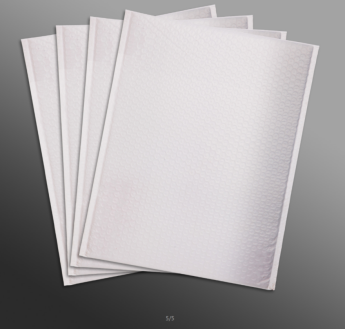Exploring Biodegradable Alternatives to Traditional Cellophane Wrap for Sustainable Packaging Solutions
The Rise of Biodegradable Cellophane Wrap A Sustainable Solution
In recent years, the growing concern for environmental sustainability has prompted both consumers and manufacturers to seek out greener alternatives to traditional packaging materials. One such innovation that has gained substantial attention is biodegradable cellophane wrap. This eco-friendly option combines the convenience of traditional plastic wrap with the added benefit of sustainability, making it an attractive choice for both individuals and businesses alike.
Cellophane itself is a transparent film made from regenerated cellulose, derived from plant materials such as wood, cotton, or hemp. Unlike conventional plastic wraps, which are derived from petroleum-based resources and can take hundreds of years to decompose in landfills, cellophane offers a more environmentally responsible alternative. The manufacturing process of cellophane involves dissolving cellulose and reconstituting it into a film, which can be done without the use of harmful chemicals found in many synthetic plastics.
The Rise of Biodegradable Cellophane Wrap A Sustainable Solution
Moreover, biodegradable cellophane wrap is versatile and can be used for a variety of applications, from food storage to gift wrapping. Its clarity and flexibility make it an ideal choice for showcasing products while also providing a secure seal that helps preserve freshness. In culinary contexts, for instance, it can be used to wrap sandwiches, fruits, and vegetables, offering an effective barrier against moisture and air while being completely compostable.
cellophane wrap biodegradable

Another aspect of biodegradable cellophane that enhances its appeal is its aesthetic quality. With a distinct sheen and clarity, it presents a more appealing visual option for packaging compared to traditional plastic wraps. Eco-conscious consumers are often drawn to products that reflect their values, and the natural look of cellophane aligns with the growing trend of sustainable branding. Many businesses are taking note of this shift, opting for biodegradable cellophane wraps in their packaging to attract customers who prioritize the environmental impact of their purchases.
However, it is essential to understand the conditions under which biodegradable cellophane will break down. For optimal decomposition, it typically requires industrial composting facilities, which might not be widely accessible to all consumers. While some can be composted at home, the breakdown process can be slower and less efficient in a regular compost bin. Therefore, education on proper disposal methods is crucial for maximizing the environmental benefits of biodegradable cellophane wraps.
As the demand for sustainable packaging alternatives continues to rise, it is clear that biodegradable cellophane wrap represents a promising shift in how we approach food storage and packaging. By choosing biodegradable options, consumers can reduce their carbon footprint and make a positive impact on the planet.
In conclusion, biodegradable cellophane wrap is not just a trend; it is a reflection of a broader movement towards sustainability. By offering a viable alternative to traditional plastic wraps, it provides an opportunity for consumers and businesses to align their practices with their values. As we look towards the future, innovations like biodegradable cellophane will play a critical role in addressing the pressing challenges of plastic pollution and environmental degradation, paving the way for a greener and more sustainable world.
-
The Best Uses for Small Trash Bags in Daily LifeNewsJul.01,2025
-
Stylish Reusable Grocery Bags TrendsNewsJul.01,2025
-
Shipping Advantages of Using Bubble Envelopes BulkNewsJul.01,2025
-
How Compostable Mailing Bags Reduce Environmental ImpactNewsJul.01,2025
-
Environmentally - Friendly Bulk Poly MailersNewsJul.01,2025
-
Eco Friendly Custom Laminated Tote BagsNewsJul.01,2025
-
Have the freedom of customizing your custom mailers any way you want! Our dedicated packaging support will help deliver you the mailing experience you need to elevate your shipping experience to the next level! Start making a strong impression on your customers and stand out from your competitors! -
LIYA uses high quality raw materials which directly purchased from large enterprises domestic and overseas such as PetroChina, Sinopec, Sabic, Equate, ExxonMobil, Dow Chemical, Total, and Borouge, ensuring the price advantage and quality of the raw materials. -
LIYA uses high quality raw materials which directly purchased from large enterprises domestic and overseas such as PetroChina, Sinopec, Sabic, Equate, ExxonMobil, Dow Chemical, Total, and Borouge, ensuring the price advantage and quality of the raw materials.





